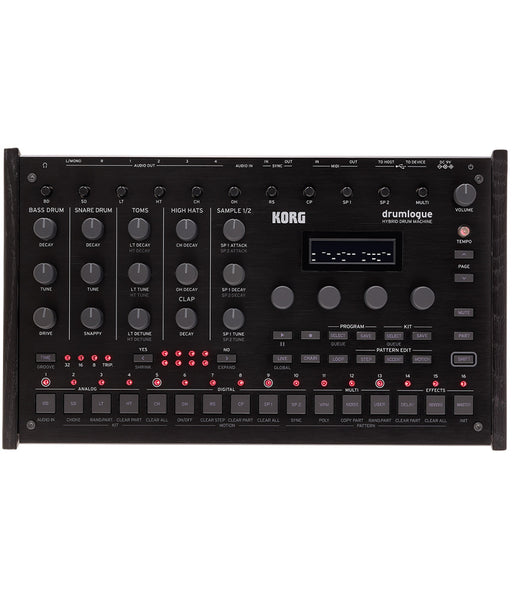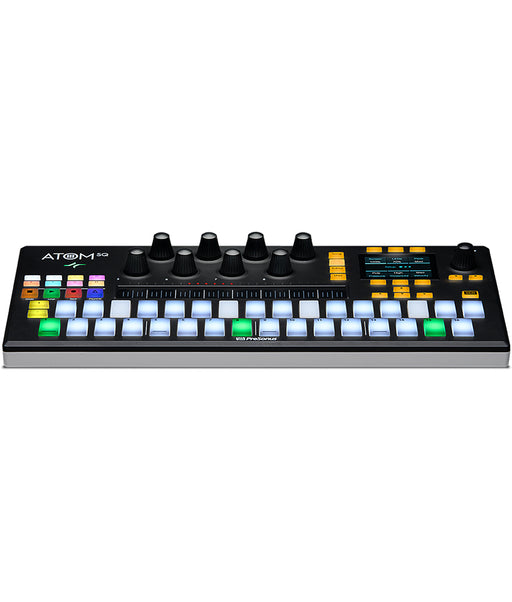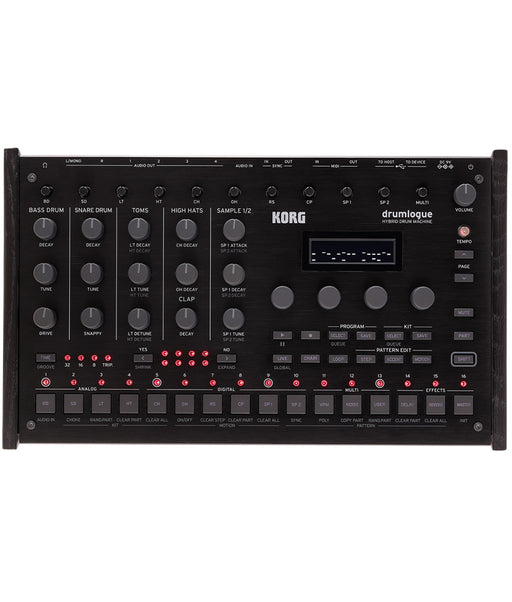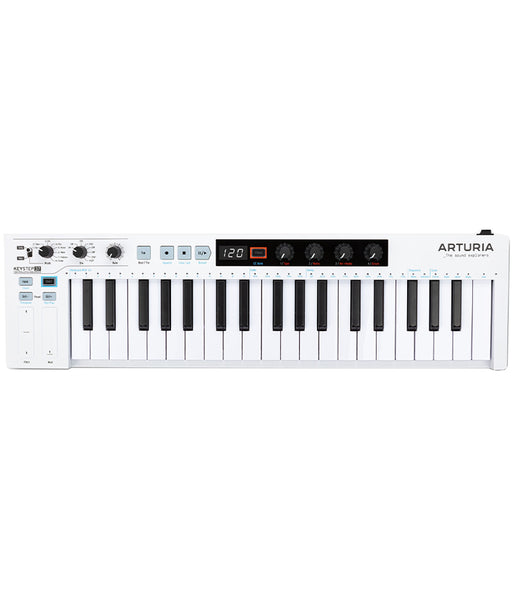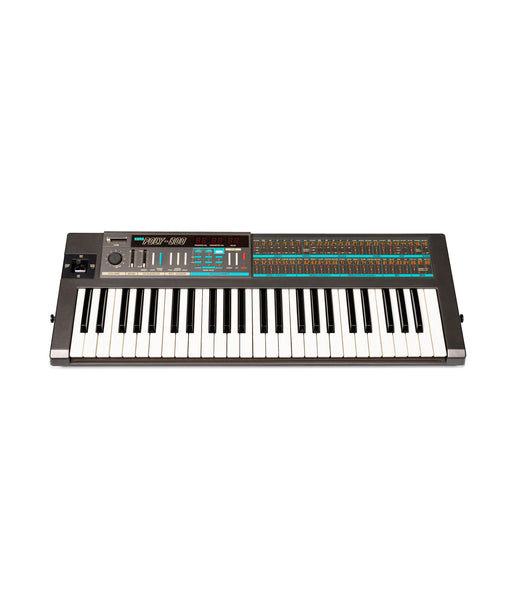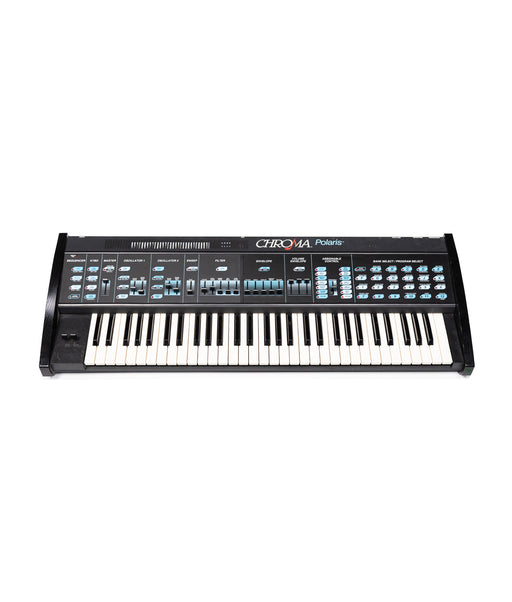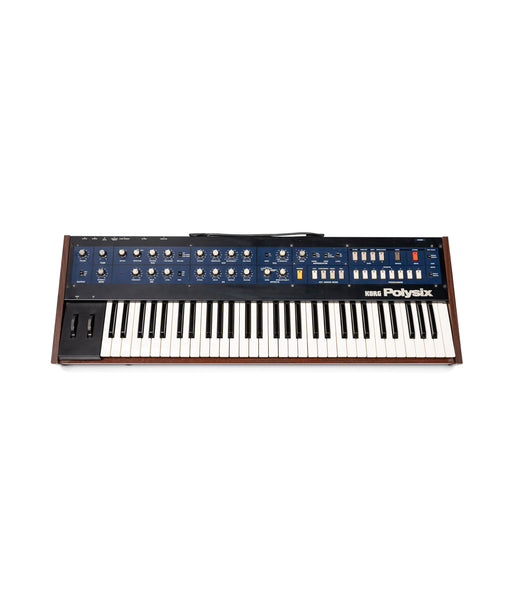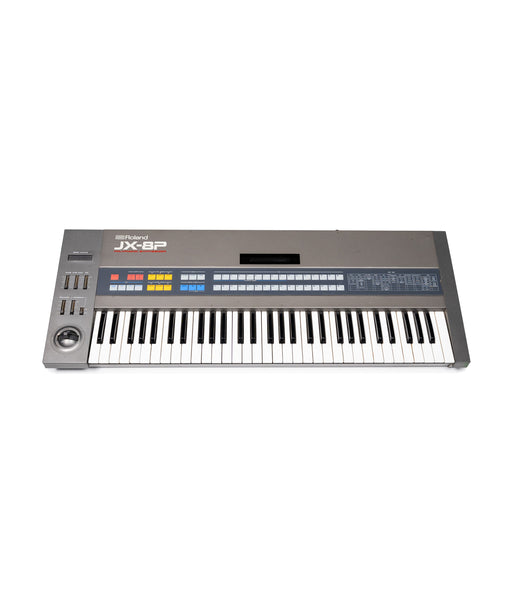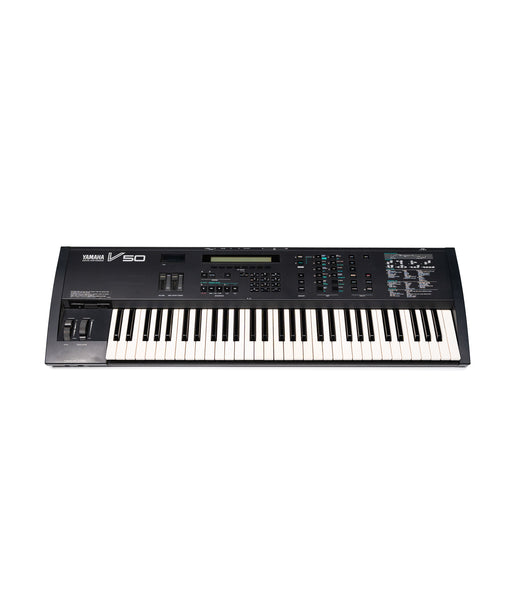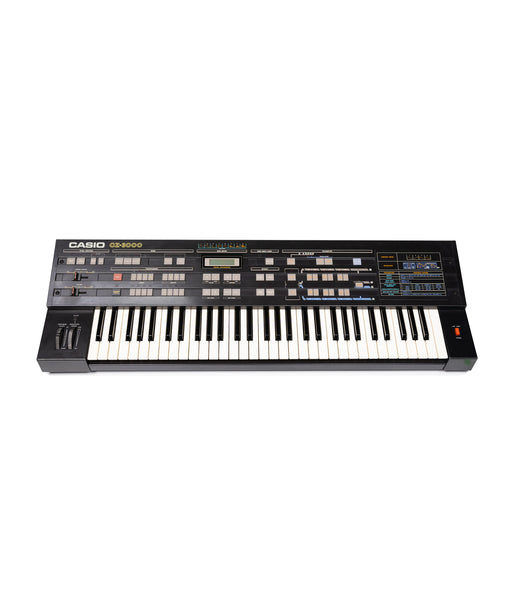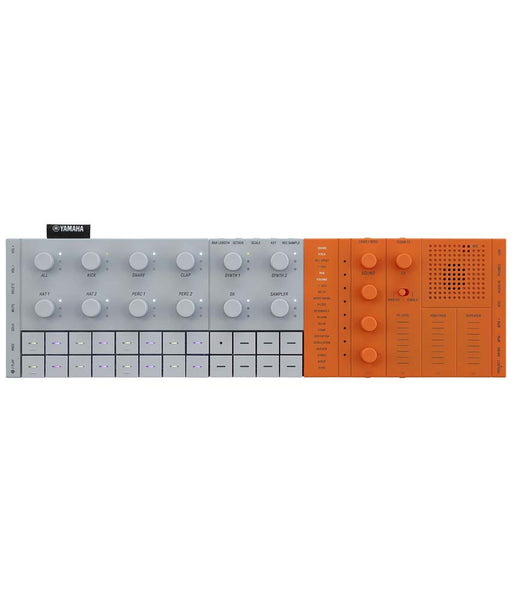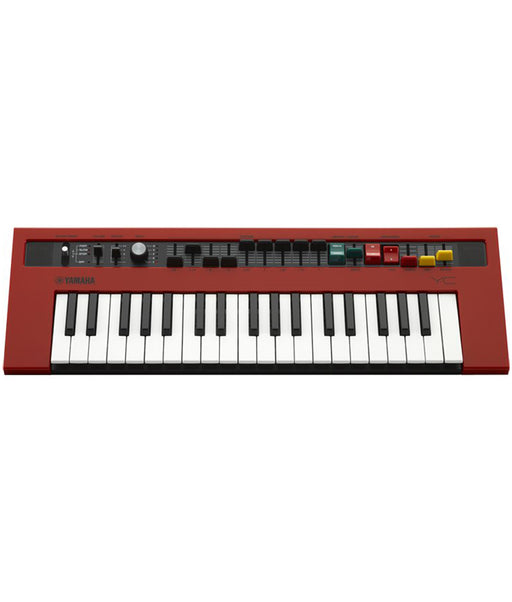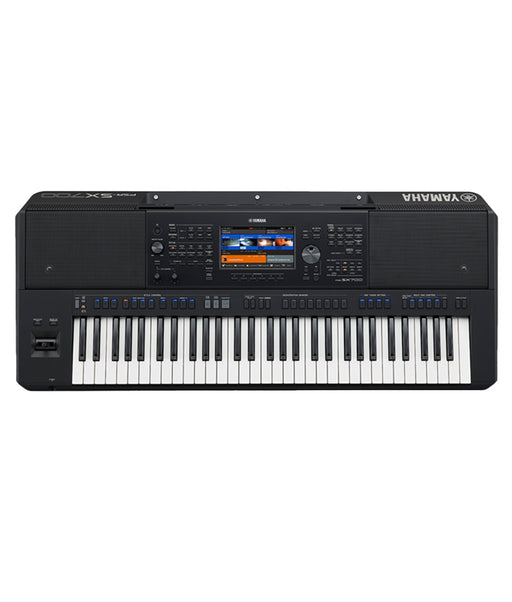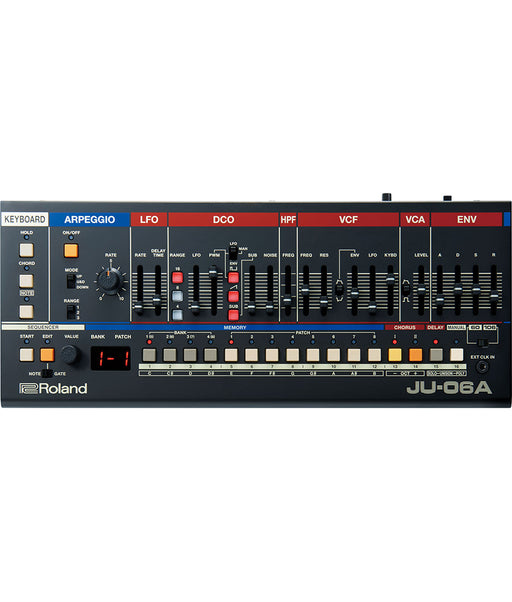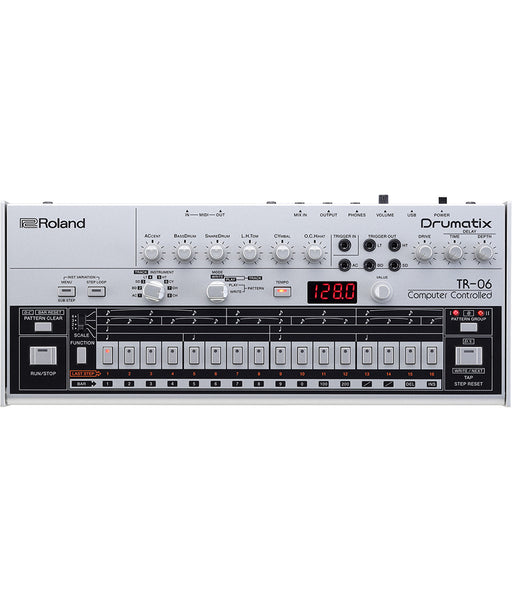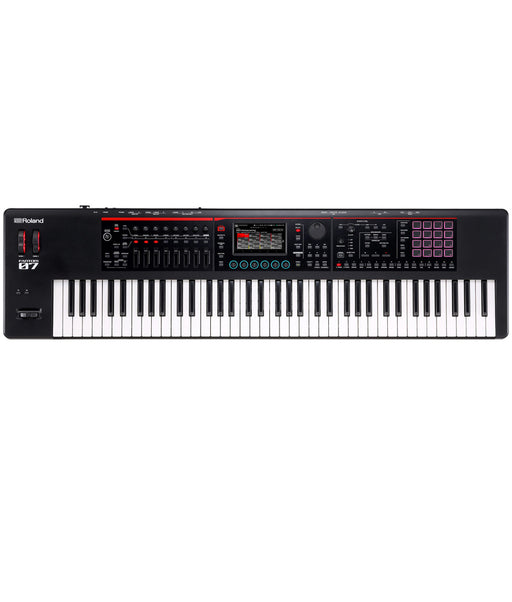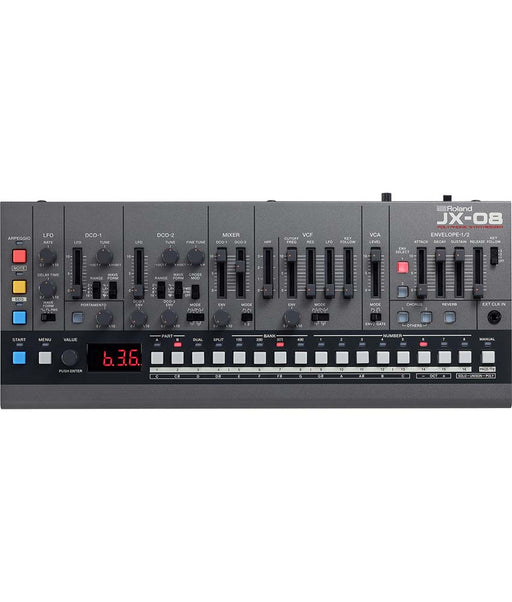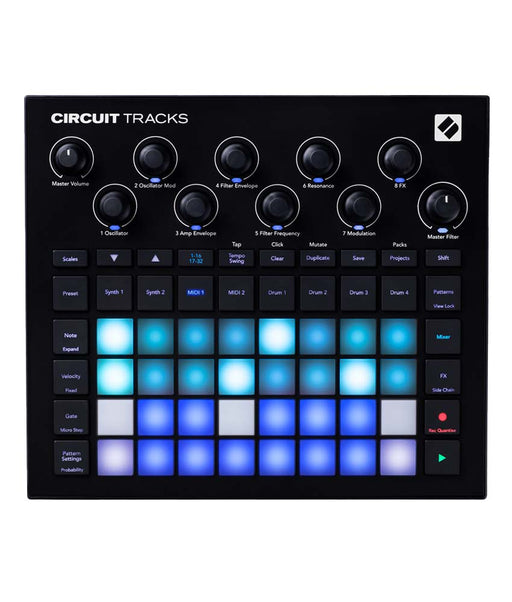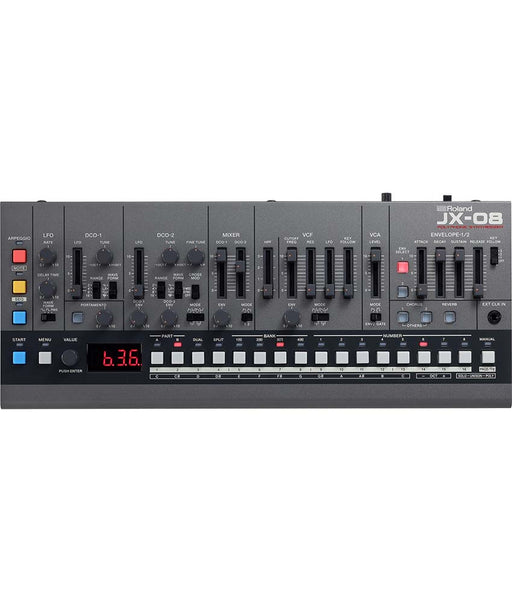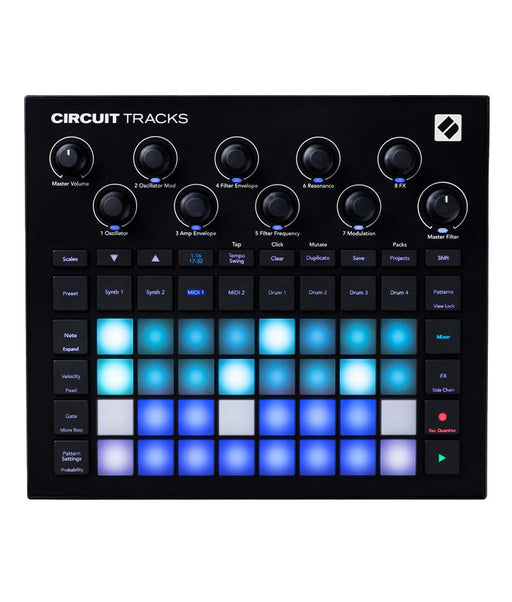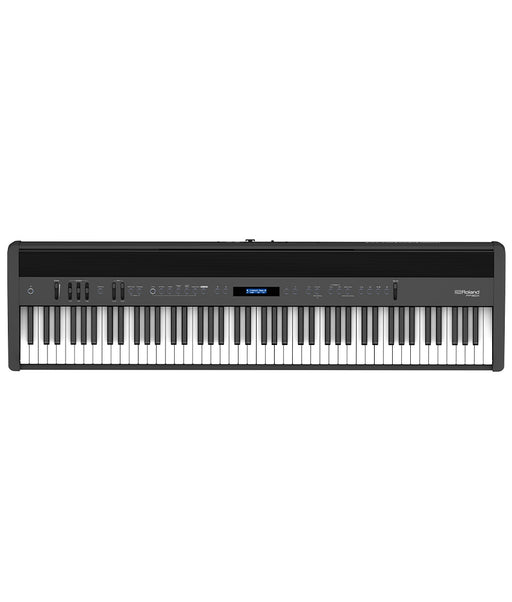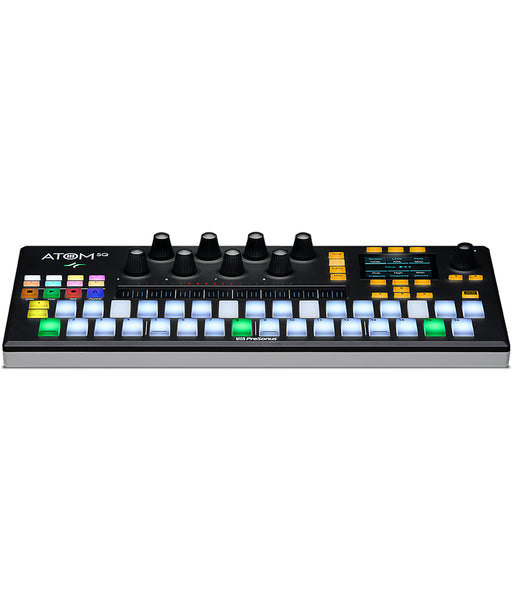Portable & Arranger Keyboards
Filters
-
Pre Owned Korg Drumlogue Analog Digital Drum Machine | Used
Original price $599.99Original price $599.99 - Original price $599.99Original price $599.99Current price $300.00$300.00 - $300.00Current price $300.00| /Pre Owned Korg Drumlogue Analog Digital Drum Machine Korg's Drumlogue marks a paradigm shift in drum machines. It offers the raw power and rich so...
View full details -
Pre-Owned PreSonus ATOM SQ Hybrid MIDI Keyboard Performance/Production Controller | Used
Original price $339.95Original price $339.95 - Original price $339.95Original price $339.95Current price $175.00$175.00 - $175.00Current price $175.00| /Pre Owned PreSonus ATOM SQ: Hybrid MIDI Keyboard / Pad Performance and Production Controller • A complete music production package featuring a hyb...
View full details -
Korg Drumlogue Analog Digital Drum Machine
Original price $599.99Original price $599.99 - Original price $599.99Original price $599.99Current price $399.99$399.99 - $399.99Current price $399.99| /Korg's Drumlogue marks a paradigm shift in drum machines. It offers the raw power and rich sounds of Analog, the flexibility of Digital voices, and...
View full details -
Pre-Owned Arturia, KeyStep 37-key Controller & Sequencer
Original price $229.00Original price $229.00 - Original price $229.00Original price $229.00Current price $185.00$185.00 - $185.00Current price $185.00| /Arturia's KeyStep 37 Controller & Sequencer combines a flexible 37-note keyboard with intuitive sequencing, instant chord generation and creati...
View full details -
Pre-Owned Korg Poly-800 Synth | Used
Original price $599.99 - Original price $599.99Original price$599.99$599.99 - $599.99Current price $599.99| /Pre-Owned Korg Poly-800 Synth Synth is in Good Condition. *Pre-Owned items are sold as-is, sale is final*
-
Pre-Owned Fender Chroma Polaris Synth | Used
Original price $4,599.99 - Original price $4,599.99Original price$4,599.99$4,599.99 - $4,599.99Current price $4,599.99| /Pre-Owned Fender Chroma Polaris Synth Synth is in Good Condition. *Pre-Owned items are sold as-is, sale is final*
-
Pre-Owned Korg Polysix Synth | Used
Original price $2,999.99 - Original price $2,999.99Original price$2,999.99$2,999.99 - $2,999.99Current price $2,999.99| /Pre-Owned Korg Polysix Synth Midi and Effects Loop Mod *Pre-Owned items are sold as-is, sale is final*
-
Pre-Owned Roland JX-8P Synth | Used
Original price $1,499.00 - Original price $1,499.00Original price$1,499.00$1,499.00 - $1,499.00Current price $1,499.00| /Pre-Owned Roland JX-8P Synth Synth is in Good Condition. *Pre-Owned items are sold as-is, sale is final*
-
Pre-Owned Roland Polyphonic JX-10 Synth | Used
Original price $1,599.00 - Original price $1,599.00Original price$1,599.00$1,599.00 - $1,599.00Current price $1,599.00| /Pre-Owned Roland Polyphonic JX-10 Synth Synth is in Good Condition. *Pre-Owned items are sold as-is, sale is final*
-
Pre-Owned Yamaha V50 Synth | Used
Original price $599.99 - Original price $599.99Original price$599.99$599.99 - $599.99Current price $599.99| /Yamaha V50 Synth Synth is in Good Condition. *Pre-Owned items are sold as-is, sale is final*
-
Pre-Owned Casio CZ-3000 Synth | Used
Original price $1,099.00 - Original price $1,099.00Original price$1,099.00$1,099.00 - $1,099.00Current price $1,099.00| /Pre-Owned Casio CZ-3000 Synth Synth is in Good Condition. *Pre-Owned items are sold as-is, sale is final*
-
Yamaha SEQTRAK Mobile Music Ideastation - Orange and White
Original price $599.00Original price $599.00 - Original price $599.00Original price $599.00Current price $399.99$399.99 - $399.99Current price $399.99| /Yamaha SEQTRAK Mobile Music Ideastation - Orange and White Yamaha's SEQTRAK is the ultimate portable music creation station. Lightning-fast workfl...
View full details -
Yamaha Reface YC Mobile Mini Keyboard
Original price $599.00Original price $599.00 - Original price $599.00Original price $599.00Current price $449.99$449.99 - $449.99Current price $449.99| /Yamaha's Reface YC is a portable music production tool. • Unique expression of drawbars and rotary speaker • Percussion and effects for a complete...
View full details -
Yamaha Reface DX Mini Keyboard Synth
Original price $599.00Original price $599.00 - Original price $599.00Original price $599.00Current price $249.99$249.99 - $249.99Current price $249.99| /Sound 4-operator FM Sound Engine offers dynamic and expressive additive synthesis A new feature of this engine is continuously variable feedback o...
View full details -
Yamaha PSR-SX700 61-key Mid-Level Arranger Keyboard
Original price $1,999.00Original price $1,999.00 - Original price $1,999.00Original price $1,999.00Current price $1,599.99$1,599.99 - $1,599.99Current price $1,599.99| /The PSR-SX700 is a mid-level 61-key Arranger Workstation with benefits from technology and content advancements made from the development of the fl...
View full details -
Roland JU-06A Boutique Series Juno Sound Module
Original price $399.99 - Original price $399.99Original price $399.99$399.99$399.99 - $399.99Current price $399.99| /With the JU-06A you get the sound, look, and features of both vintage classic models JUNO-60 and JUNO-106 in one reliable, modern instrument that y...
View full details -
Roland TR-06 Drumatix Rhythm Performer
Original price $399.99 - Original price $399.99Original price$399.99$399.99 - $399.99Current price $399.99| /The TR-06 is a detailed replica of the classic Roland TR-606-with some major modern upgrades. It has the distinctive tone and iconic look of the or...
View full details -
Roland FANTOM-07 Music Workstation Keyboard
Original price $1,899.99Original price $1,899.99 - Original price $1,899.99Original price $1,899.99Current price $1,499.99$1,499.99 - $1,499.99Current price $1,499.99| /Equipped with a newly designed 76-note keyboard, FANTOM-07 has everything you need to create and perform at the highest level. Play and produce wit...
View full details -
Pre-Owned Roland JX-08 Boutique Series JX8P Sound Module
Original price $399.99Original price $399.99 - Original price $399.99Original price $399.99Current price $350.00$350.00 - $350.00Current price $350.00| /Pre-Owned Roland JX-08 Boutique Series JX8P Sound ModuleThe JX-08 reintroduces the unique sound of the JX-8P, coupled with powerful new effects, a ...
View full details -
Pre-Owned Novation Circuit Tracks Groovebox | Used
Original price $399.99Original price $399.99 - Original price $399.99Original price $399.99Current price $327.00$327.00 - $327.00Current price $327.00| /Pre-Owned Novation Circuit Tracks Groovebox Circuit Tracks is an extraordinary standalone groovebox for the modern producer. With two refined poly...
View full details -
Roland JX-08 Boutique Series JX-8P Sound Module
Original price $399.99 - Original price $399.99Original price $399.99$399.99$399.99 - $399.99Current price $399.99| /The JX-08 reintroduces the unique sound of the JX-8P, coupled with powerful new effects, a polyphonic sequencer, and more. And to enhance your crea...
View full details -
Novation Circuit Tracks Groovebox
Original price $399.99 - Original price $399.99Original price$399.99$399.99 - $399.99Current price $399.99| /Circuit Tracks is an extraordinary standalone groovebox for the modern producer. With two refined polyphonic digital synth tracks, four drum tracks...
View full details -
Pre-Owned Roland FP-60X, Digital Piano - Black
Original price $1,249.99Original price $1,249.99 - Original price $1,249.99Original price $1,249.99Current price $990.00$990.00 - $990.00Current price $990.00| /The FP-60X are Roland's SuperNATURAL Piano and dynamic 88-key PHA-4 Standard keyboard, along with a selection of expressive acoustic pianos and dee...
View full details -
Pre-Owned PreSonus ATOM SQ, Hybrid MIDI Keyboard Performance / Pro. Controller
Original price $339.95Original price $339.95 - Original price $339.95Original price $339.95Current price $175.00$175.00 - $175.00Current price $175.00| /Pre Owned PreSonus ATOM SQ: Hybrid MIDI Keyboard / Pad Performance and Production Controller• A complete music production package featuring a hybri...
View full details
There's so much you can do with a keyboard. From the '70s into the present, they've been an integral part of rock bands, are essential in the recording studio, and define whole subgenres of electronic dance music. Yet, while keyboards share much of their appearance and functionality with digital pianos, they're vastly different instruments.
Types of Keyboards
To begin, a traditional piano offers 88 keys and a set of pedals.
Keyboards, however, aren't based on this standard. Instead, a mini keyboard, geared toward creating sounds, may be designed with a far smaller number, while a portable piano keyboard - a quick and convenient replacement for an acoustic - includes all 88 white and black keys.In addition to this significant variable, keyboards are divided into a few types:
- Synthesizers: Although many use synthesizer and keyboard interchangeably, a synth is nearly strictly used for recording, producing and playing back sounds, harnessing sampling technology. In turn, not every synthesizer includes a proper keyboard - many have just a series of buttons and knobs. Synthesizers, as well, may be monophonic - allowing for one tone at a time - or polyphonic.
- Workstation: A workstation essentially is an all-in-one system designed for playing, recording, and producing. In turn, these keyboards feature an internal hard drive, can connect to a computer, utilize sampling technology, and have the same polyphony capabilities that digital pianos offer.
- Portable keyboards: These models tend to have basic functions for beginners interested in learning about recording and sampling technologies and offer the full functionality of a digital piano.
- Digital Pianos: Sometimes casually called a piano keyboard, digital pianos aim to reproduce the feel and action of an acoustic piano and have a few recording features. Models also let the player switch between sounds and play with pre-recorded beats or instrumentation.
Pianos Versus Keyboards
Aside from the number of keys, most keyboards are geared toward individuals who have some knowledge of how music fits together. In turn:
- A digital piano often has weighted keys, while a keyboard offers no resistance.
- Because keys are more touch sensitive, players can do dynamics on a digital piano, but rarely will a keyboard offer this feature.
- Keyboards offer multitimbrality - different from polyphony - allowing for several sounds to be played or performed at once.
- MIDI technology is at the heart of most keyboards, while a digital piano seldom offers these capabilities.
- Similarly, because they are used for production purposes, keyboards often have a built-in sequencer, arpeggiator and sampler.
- Because they're designed for composing and no longer have a floppy drive, keyboards nearly by default connect to a computer through multiple methods, and usually feature input/output functionality.
Find a Keyboard at Alamo Music Center
Whether you're a producer wanting to explore synths or a performer needing an instrument to take to a gig, find a full spectrum of keyboards at Alamo Music Center, including new and pre-owned instruments for sale from Roland, Casio, Yamaha, Kawai, Korg and more brands.
Sometimes, you need to try out an instrument in person, especially if it's a new keyboard, digital piano or workstation. You want to get a sense of the feel, features and how easily you can practice or perform on it based on your skill level and goals. While you can review all keyboards online, you can come by either of our San Antonio stores, or you can make an appointment at one of our Kawai showrooms:
Digital Pianos & Keyboards in Austin, Texas
Do you want a better practice instrument, but also know you have limited space in your apartment? Kawai has developed the perfect solution: Digital pianos and keyboards developed simultaneously with the brand's majestic acoustic grands. You don't compromise on sound quality, responsiveness or dynamics while getting an instrument better suited to your home or practice room's dimensions.
We're a factory-authorized Kawai dealer. Not only do we offer a broad selection of instruments, but we carry all at wholesale prices. Stop by our Austin showroom to play before you buy.
Digital Pianos & Keyboards in St. Louis, Missouri
We're expanding, and in bringing quality instruments to more customers, we opened a Kawai showroom in St. Louis. If you're in the area and are considering Kawai digital pianos and keyboards, schedule a time to try out these instruments, both for their sound and expansive array of features.
For online and in-person purchases, we offer multiple financing and layaway options, including 12- to 48-month, no-interest options at times, plus trial lessons and an extended warranty.

